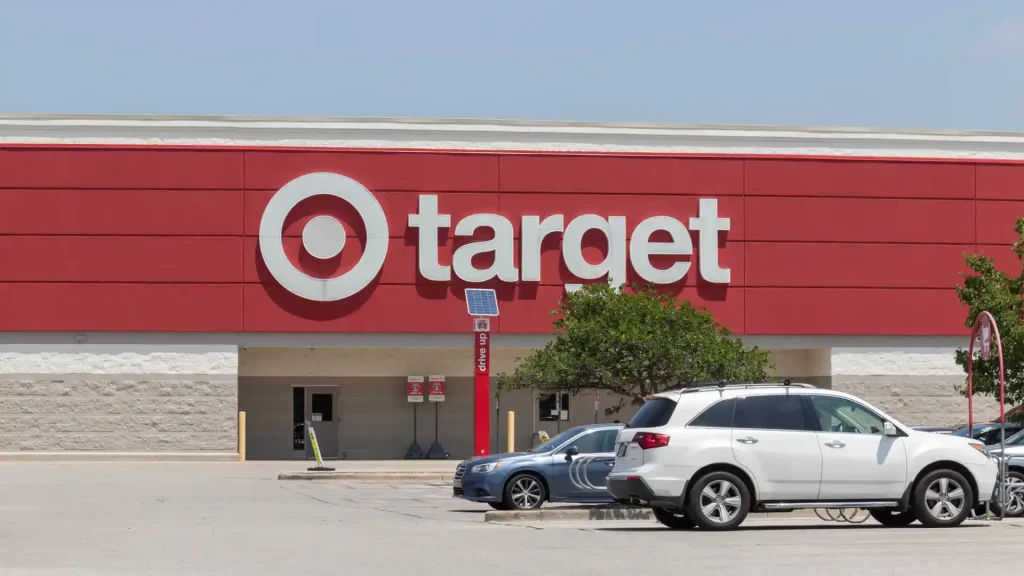Target’s strategies aim to counter-react to declining sales amid challenges posed by inflation, interest rates, and controversies surrounding certain product lines.
Target corp. experienced a significant surge on Tuesday following its fourth-quarter earnings surpassing expectations, coupled with plans for store renovations and expansions. Adjusted earnings of $2.98 per share, exceeding analytics forecasts, were driven by improved inventory management reported by the company.
Despite a 4.4% decline in comparable sales, slightly better than expected but marking the third consequent quarterly decrease. Target remains optimistic about regaining sales growth and market shares.
The stock soared 13% in New York trading, marking its highest increase since the previous earnings report in November and pushing its year-to-date gain to nearly 19%, outperforming the S&P 500 Index.
Target’s strategies aim to counter-react to declining sales amid challenges posed by inflation, interest rates, and controversies surrounding certain product lines.
The retailer’s expansion plans include opening over 300 new stores in the next decade and enhancing its supply-chain technology, alongside renovating the majority of its existing locations. These stores, expected to be larger in size, aim to generate an additional $ 15 billion in sales upon completion, with an emphasis on expanding food and beverage offerings.
According to Michale Fiddelke, Target’s chief operating officer and interim chief financial officer, the larger store format presents a compelling opportunity, given their attractive returns across the US. This initiative builds upon Target’s successful test of larger-format locations with expanded back rooms for fulfilling online orders, as well as the addition of more in-store partnerships such as Ulta Beauty Inc.
Furthermore, the Minneapolis-based company is set to introduce a new paid membership program, making a move to compete with established subscription plans offered by its rivals.
Named Target 360, the program will provide unlimited free same-day delivery for orders exceeding $35, deliverable within an hour, and free two-day shipping for Target.com orders, the company revealed during investor presentations in New York on Tuesday.
It will debut on April 7 at a discounted rate of $49 per year until May 18, after which it will increase to $99 for members without a Target credit or debit card.
Target Circle 360 represents the premium tier of an expanded version of the existing Target Circle loyalty program. The company is rebranding its Target RedCard credit and debit cards as Target Circle Card, offering benefits like a 5% discount on purchases, while also maintaining the free-to-join Target Circle membership.
Additionally, Target intends to introduce further perks to Target Circle 360, including exclusive partnerships and experiences. Fiddelke emphasized the importance of customer feedback in shaping the program’s evolution and benefits.
He cited the “Drive Up” program for curbside pick-up as an example, with customer input prompting enhancements such as the inclusion of frozen and refrigerated items, product returns, and beverages from in-store Starbucks locations.
For Target and other retailers, paid memberships hold significant value as they generate additional revenue and foster stronger customer loyalty.
Such memberships typically offer free delivery for digital orders, encouraging cross-platform shopping and increasing overall spending by consumers who shop both online and in-store.
Target’s entry into the paid membership space comes later than its competitors. Amazon.com Inc. introduced Prime in 2005, priced at $139 per year, boasting over 200 million members, while Walmart Inc. launched its $98 per-year equivalent in 2020, garnering an undisclosed number of subscribers through heightened marketing efforts.
Retailers have been enticing more individuals to enroll in memberships by offering incentives such as complimentary streaming services and discounts on fuel. While some are implementing multiple price levels, the extent to which consumers will subscribe to these programs remains uncertain.
According to various analysts, Target will need to introduce some unique features to its program to counteract consumer fatigue with memberships. The benefits will need to stand out significantly to attract shoppers.
